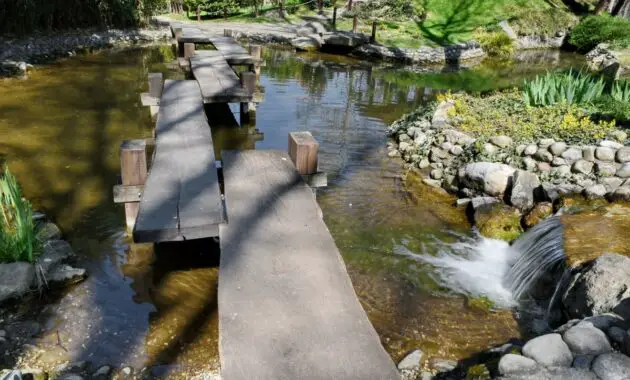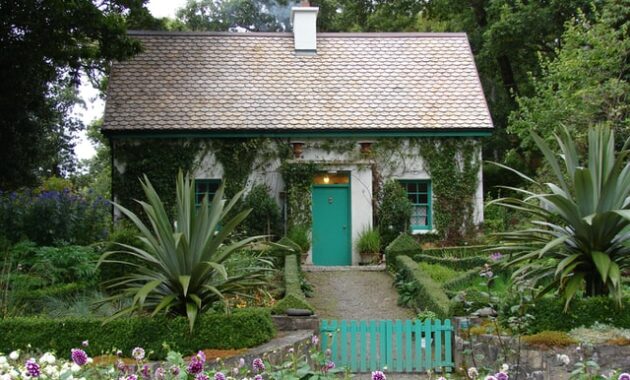One of the most popular front yard landscaping ideas is to use large rocks as stepping stones. A rock path will allow you to walk through the rock garden and enjoy the view.
It will also be a great place to sit and relax. You can choose various types of rocks and make the rock garden your own.
You can even create an abstract ornament using different colors. This way, you can bring natural elements into your front yard and still keep it looking modern.
Landscaping your front yard with rocks offers a blend of aesthetic appeal, functionality, and sustainability.
Whether you’re aiming for a low-maintenance design or seeking to create a visually striking entrance, incorporating rocks can transform your outdoor space.
Here’s a detailed guide to inspire your front yard landscaping project:
1. Choosing the Right Rocks
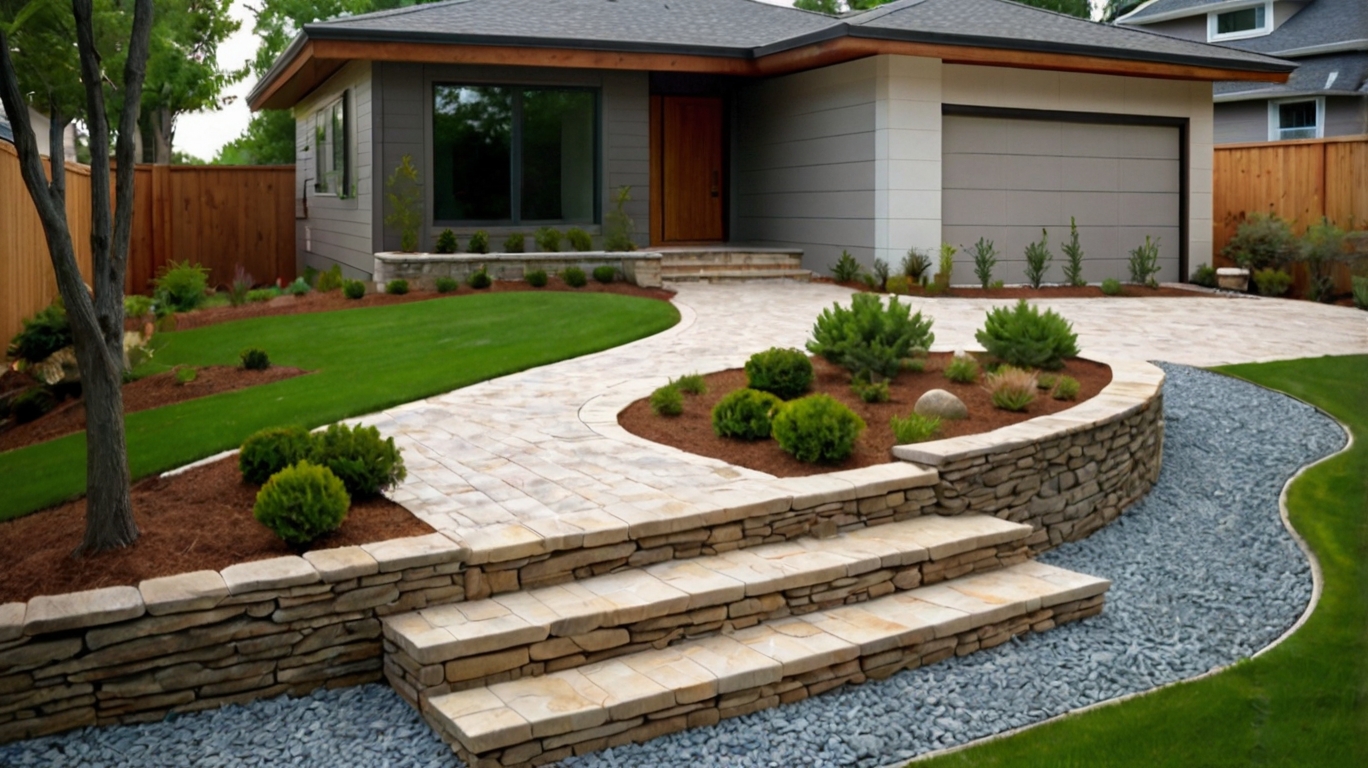
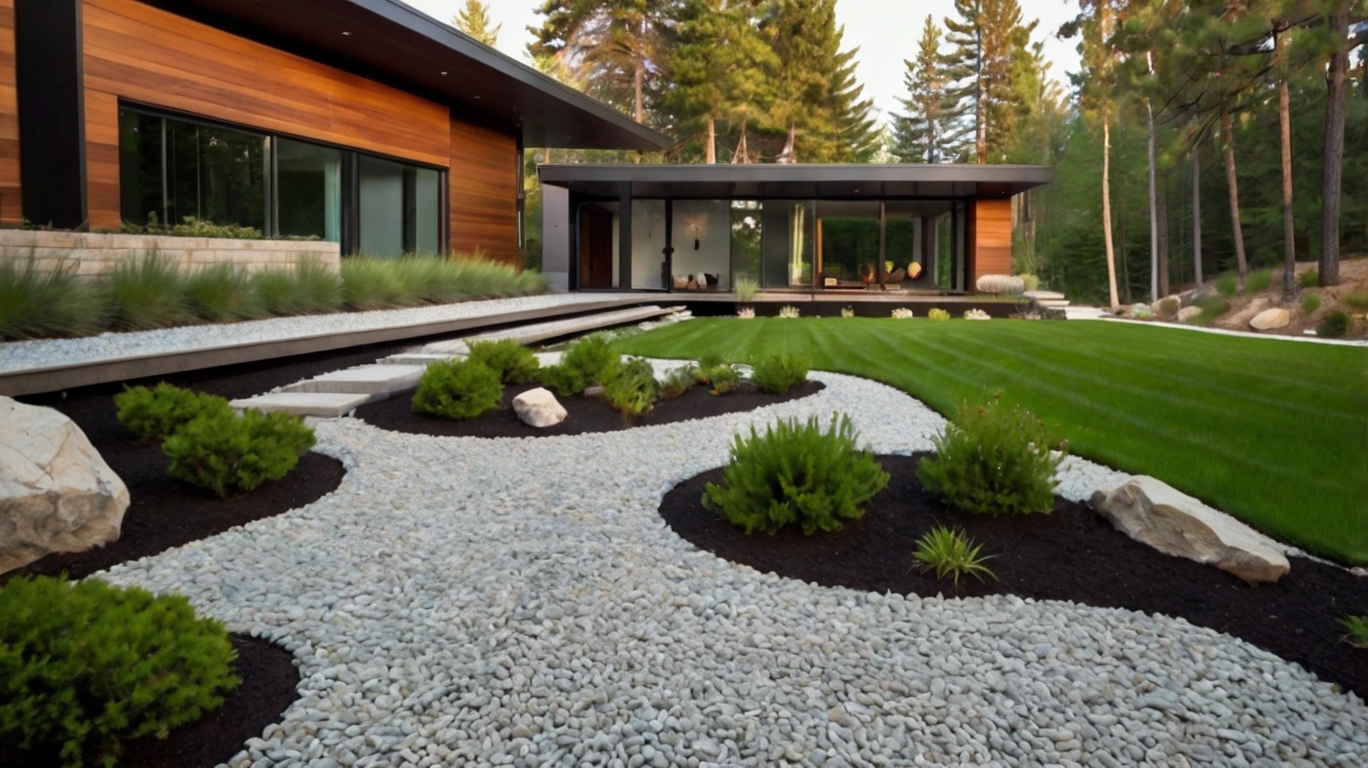

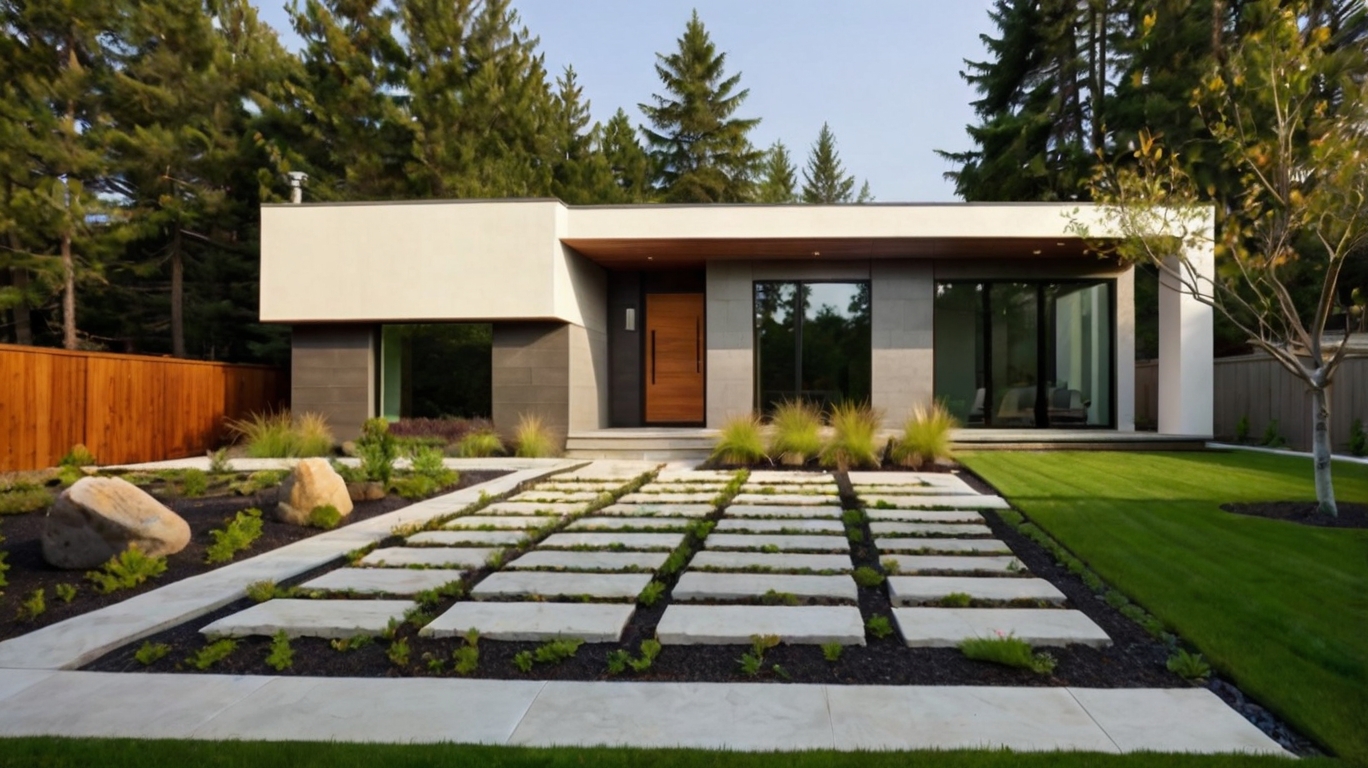
Select rocks that complement your home’s architecture and the overall theme of your landscape. Options include:
- River Rocks: Smooth and round, perfect for creating borders or ground cover.
- Flagstone: Flat and easily stackable for pathways or patio areas.
- Boulders: Large and dramatic, ideal as focal points or for creating natural barriers.
- Gravel: Versatile and easy to spread, suitable for driveways or pathways.
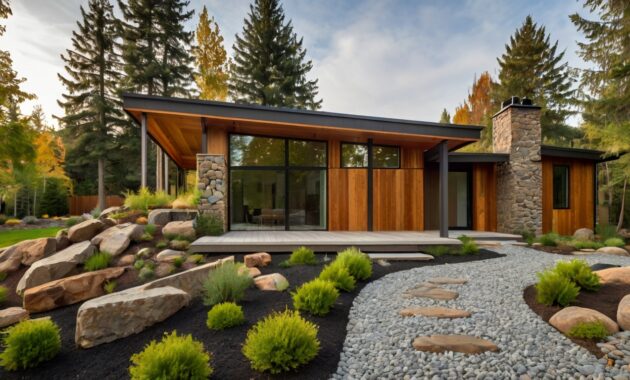
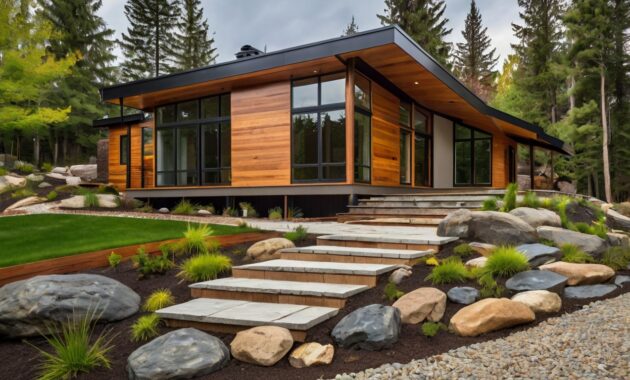
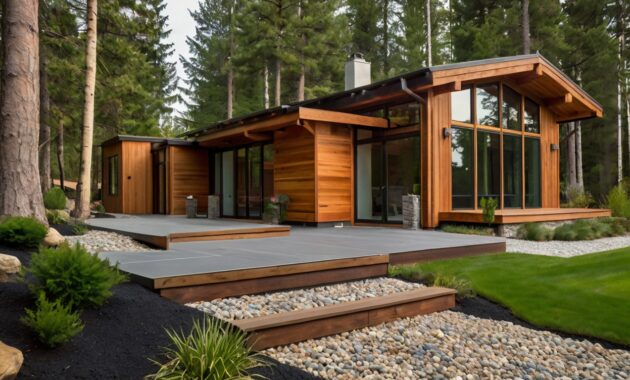
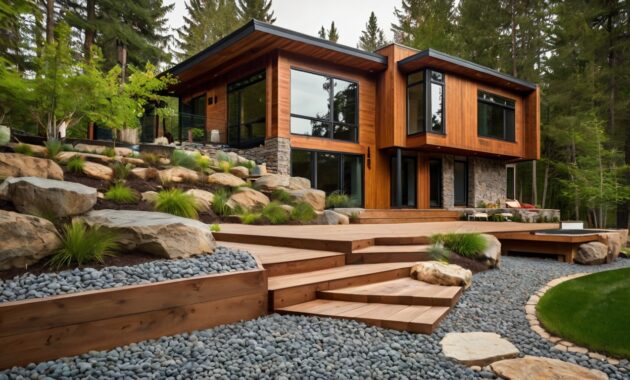

Royal Imports 5LBS River Rocks Decorative Ornamental Pebbles, Garden Landscaping Stones, Gravel Filler for Plants, Vases, Succulents, Home Decor, Aquariums, Crafting, Animal Habitat – Large Natural
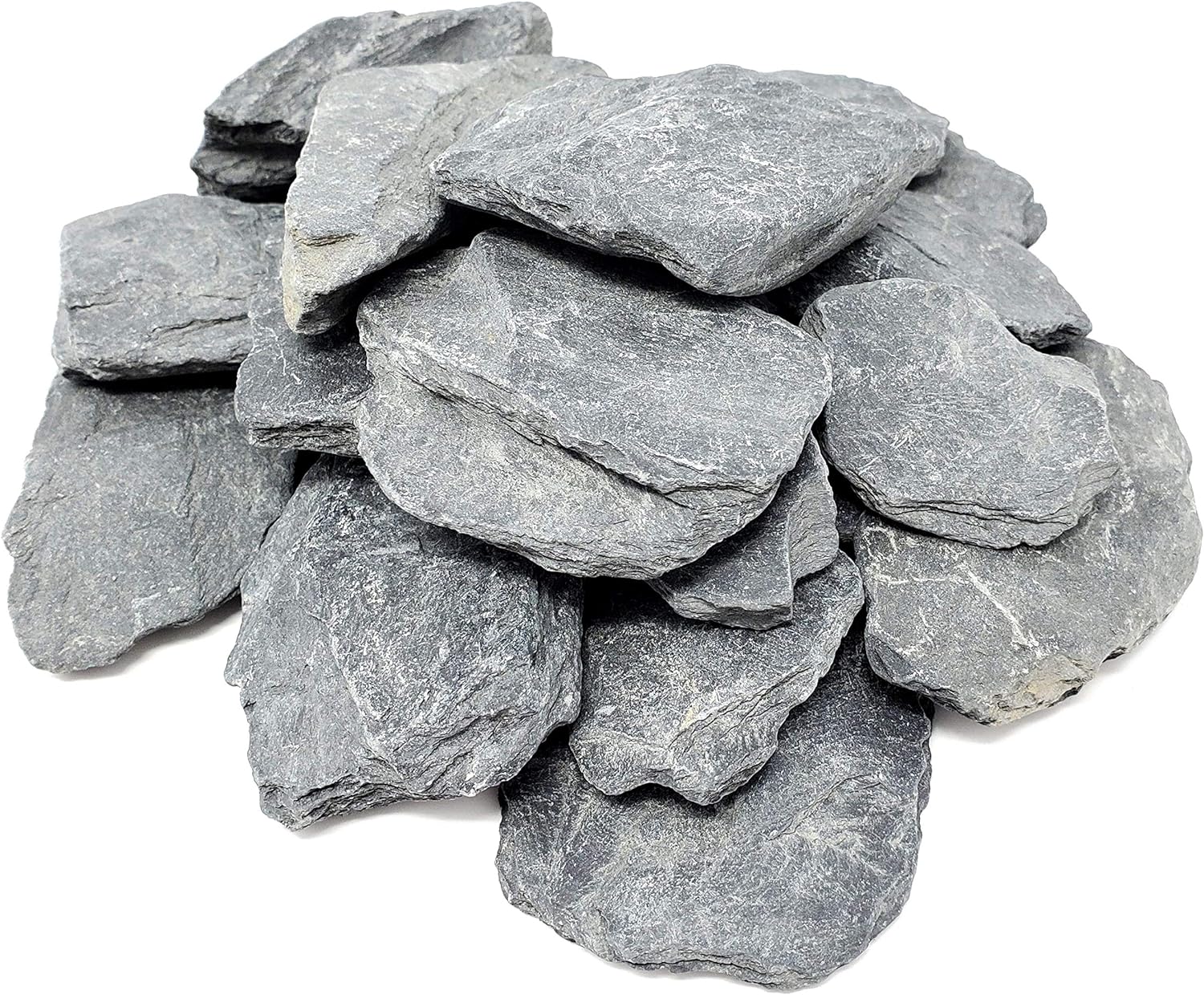
Small Slate Stones (Slate Stones 2 LBS) – Natural Slate Rocks – Range from 1 to 2 inches (Stones are Dusty)
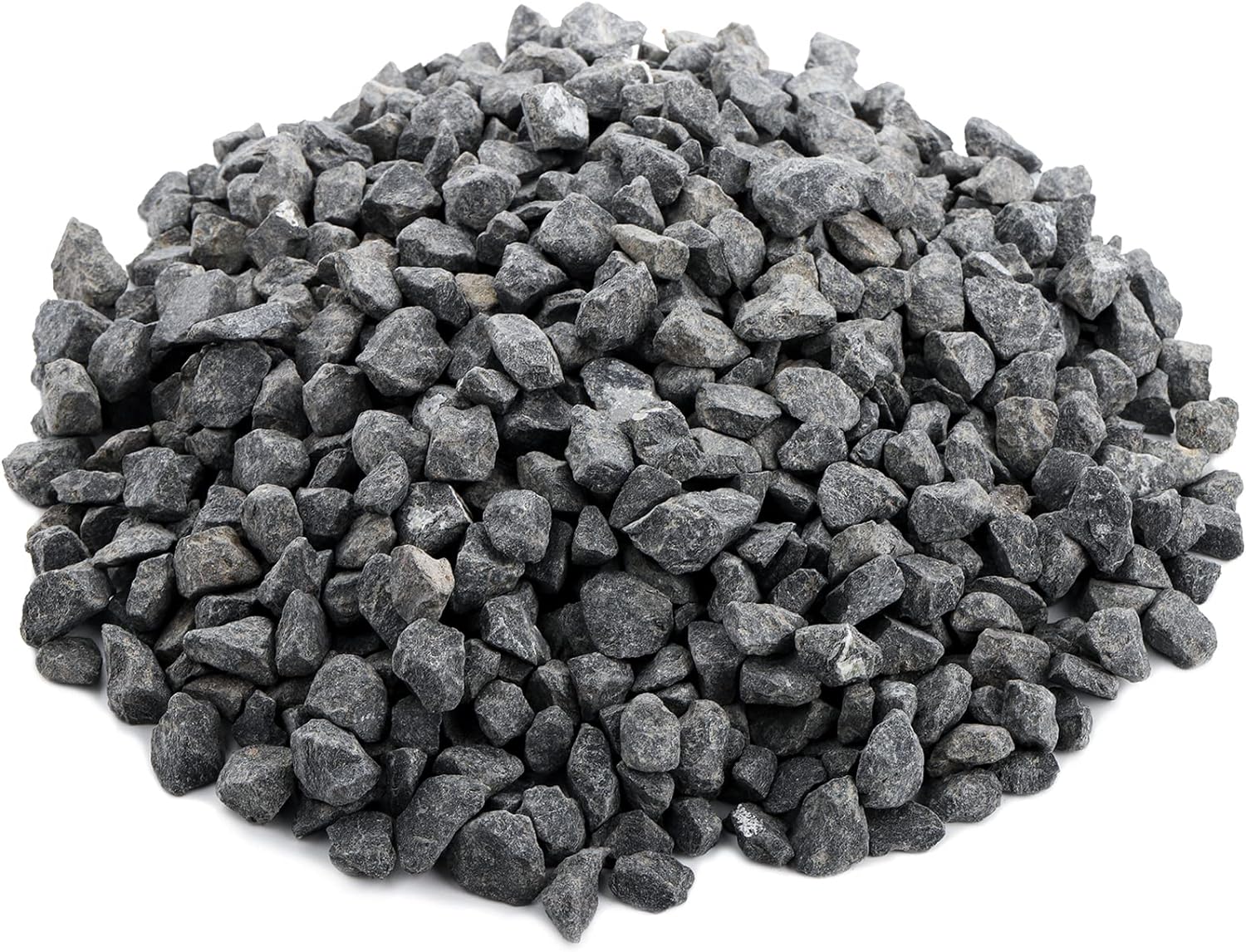
ZOOFOX 10lb Natural Rocks Stones, Small Washed Gravel for Terrariums, Succulents, Landscaping, Fairy Gardens, Aquariums and Walkway

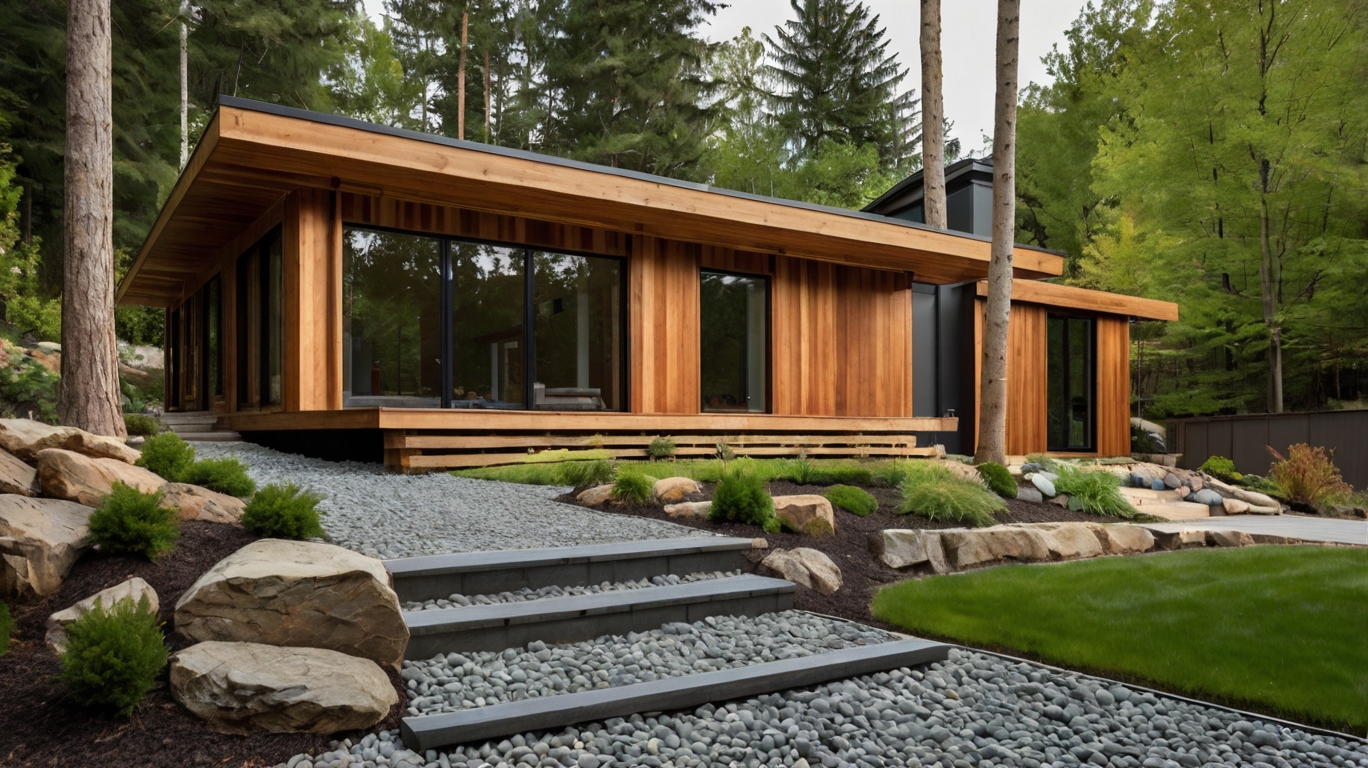
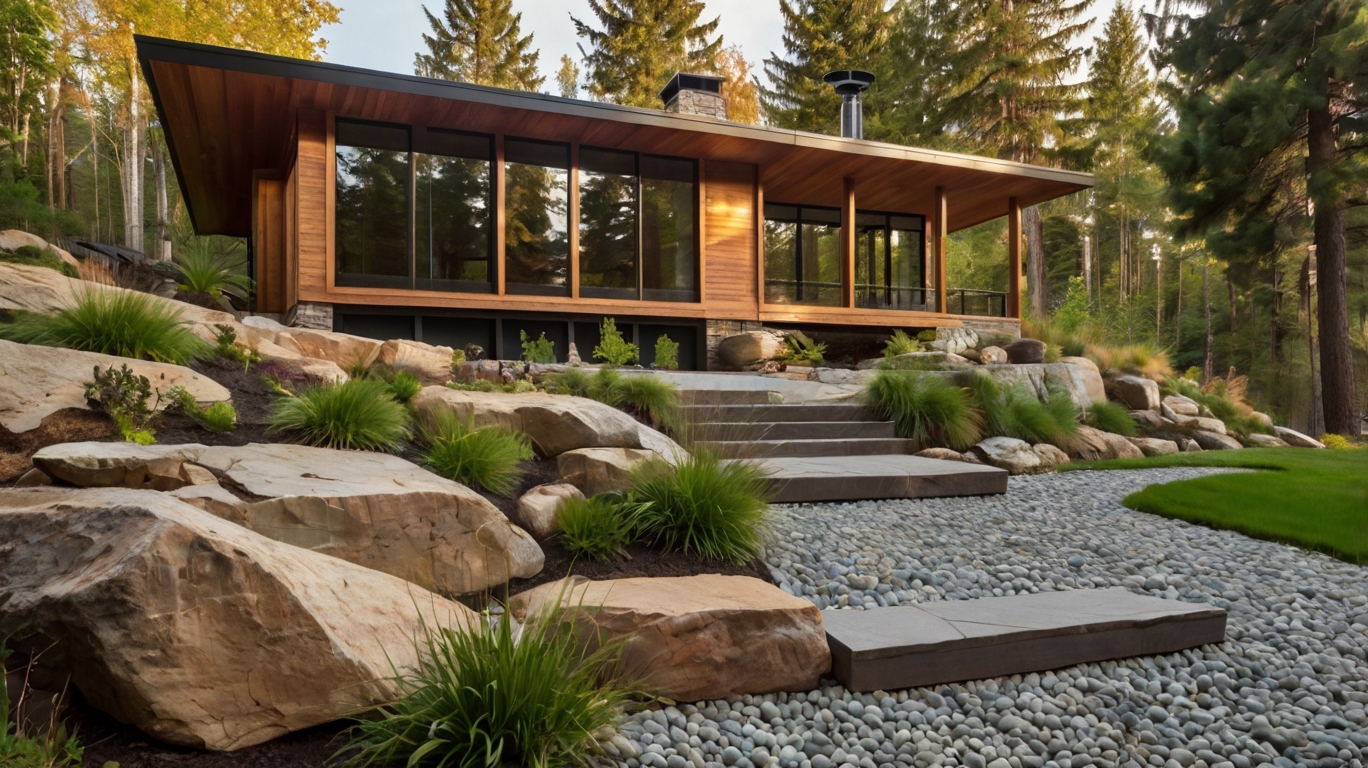

2. Creating Pathways
Use rocks to outline pathways leading to your front door or through your garden. This not only guides visitors but also adds texture and visual interest. Consider mixing different sizes and types of rocks for a more dynamic effect.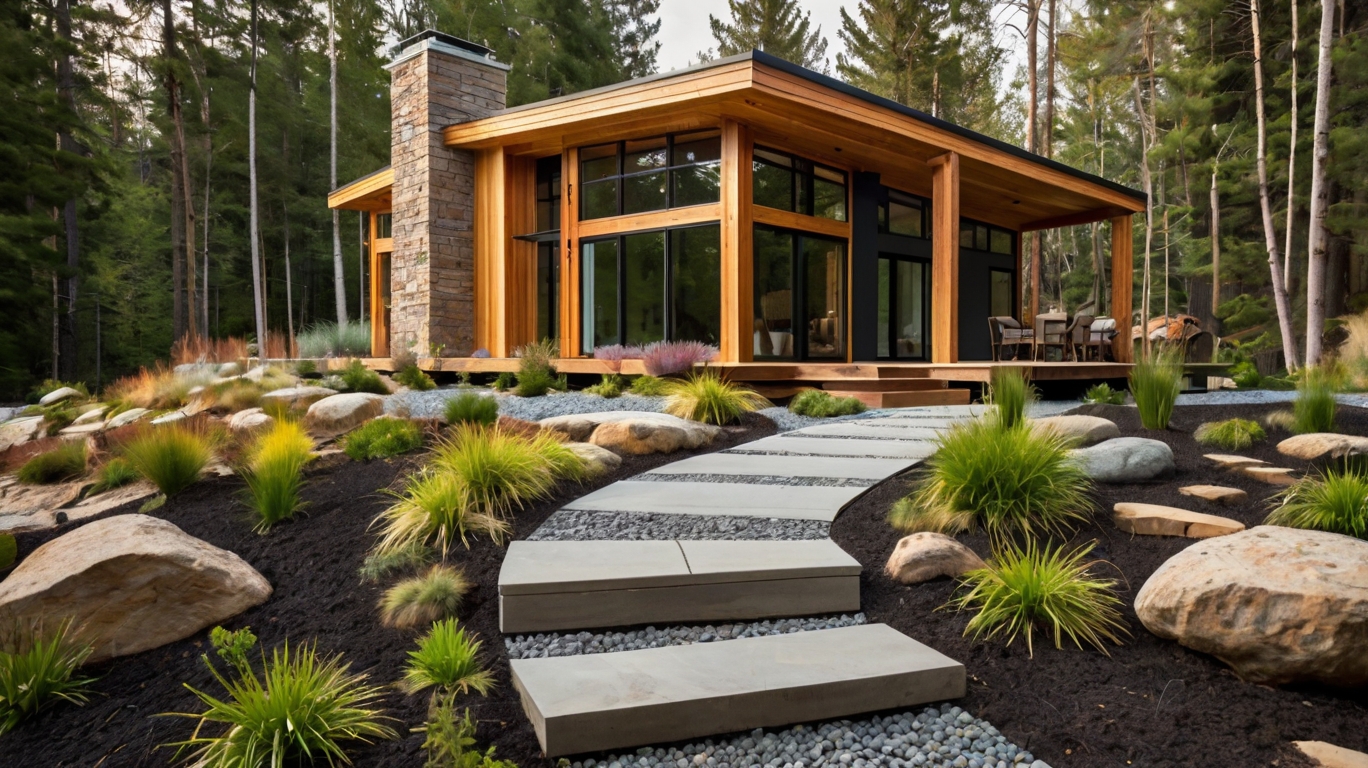
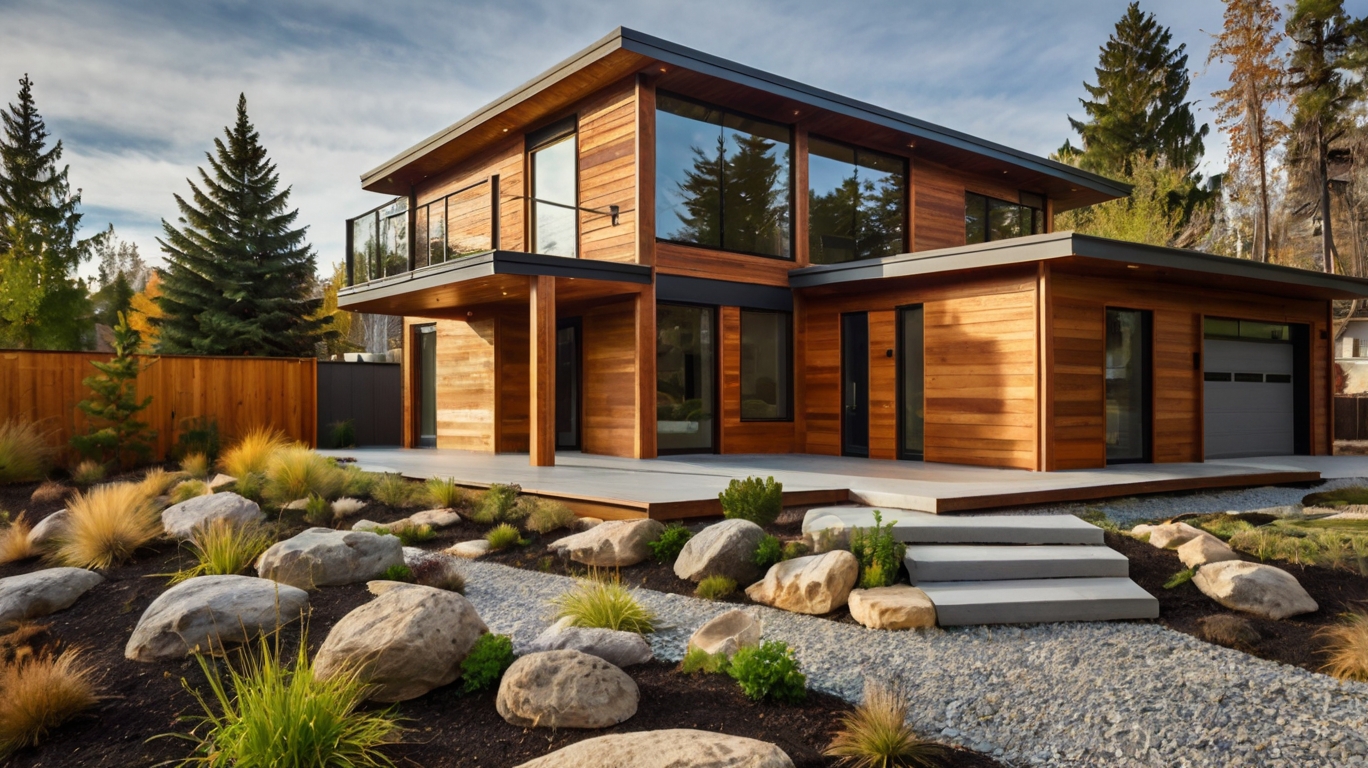
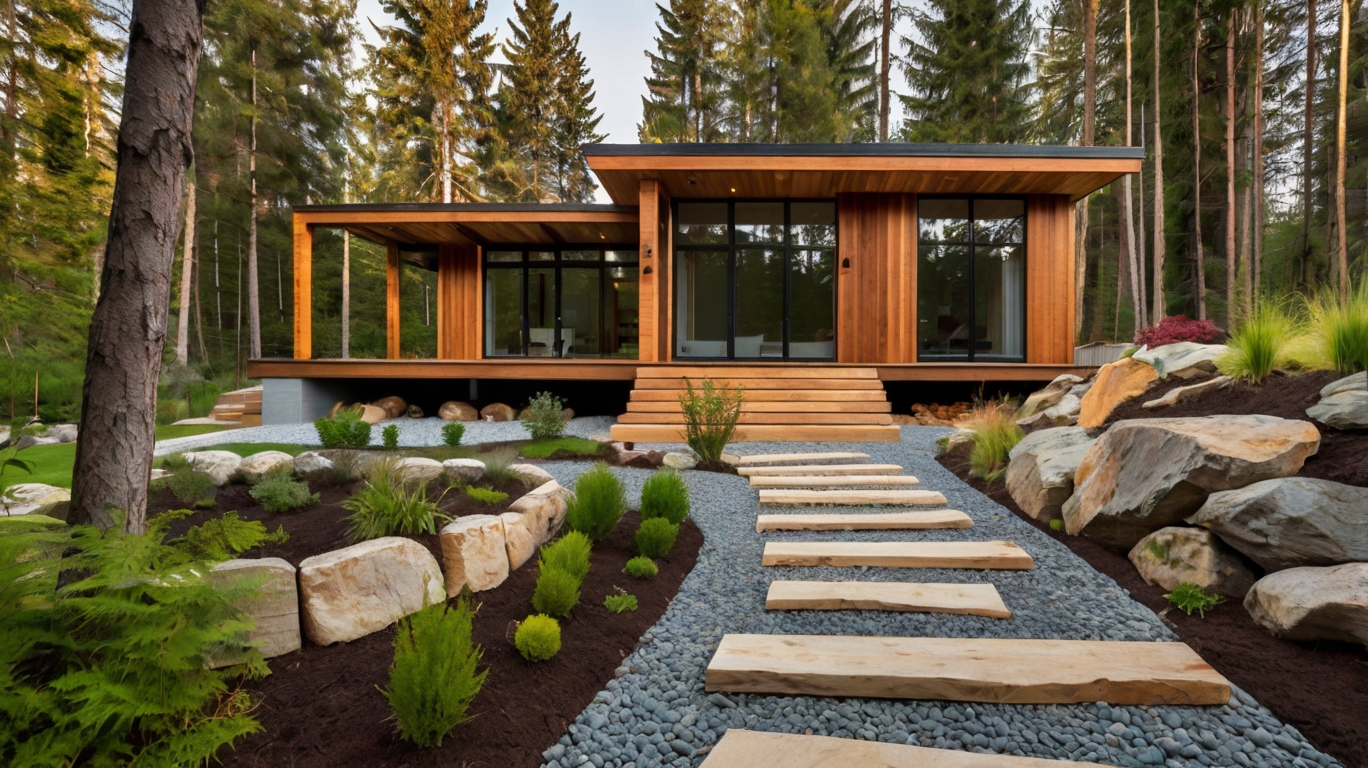
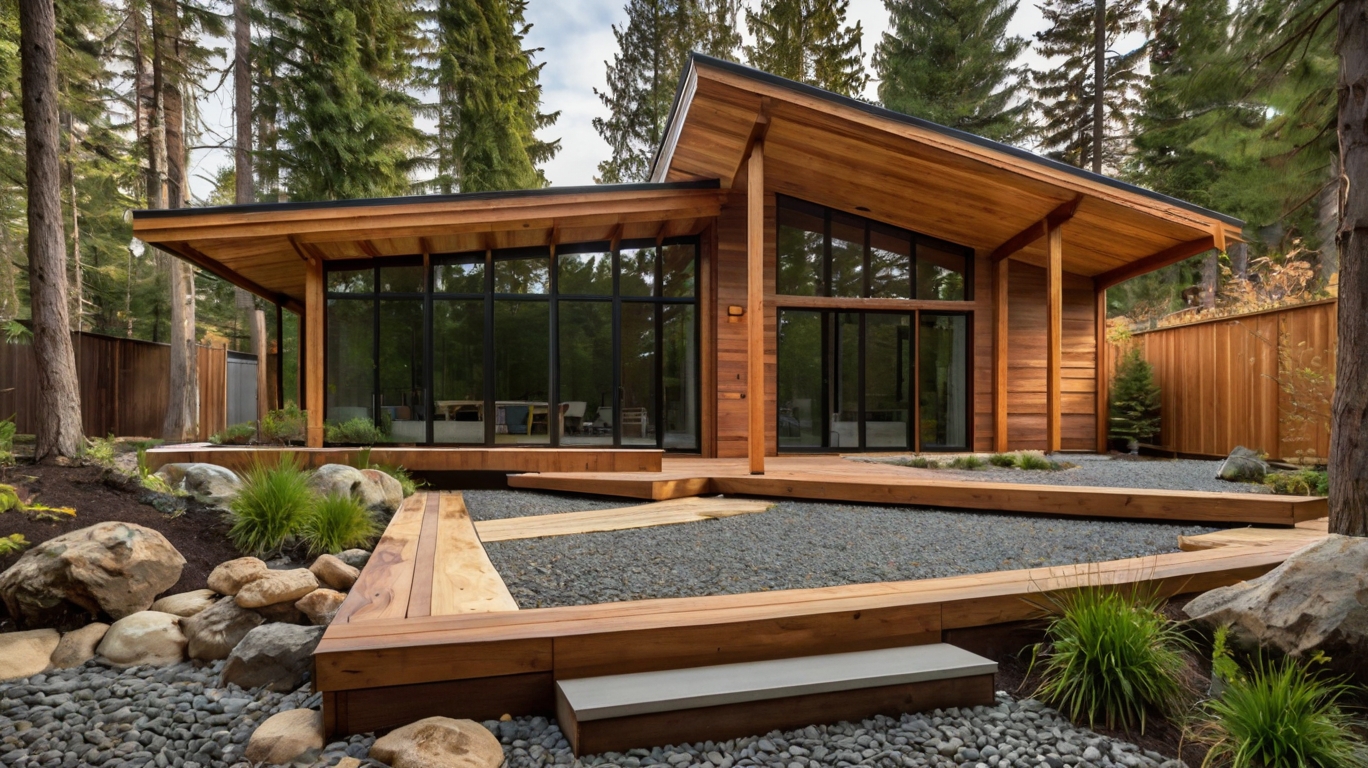
Read also:
1. 60 Best Permeable Driveway Paving Ideas
2. 53 Backyard Putting Green and Custom Backyard Ideas
3. 101 Creative and Stunning Front Yard Corner Lot Landscaping Ideas
3. Rock Gardens
Design a rock garden in areas where plants may struggle to thrive due to soil conditions or sunlight. Arrange rocks amidst drought-tolerant plants such as succulents, lavender, or ornamental grasses. This creates a low-maintenance and water-efficient landscape.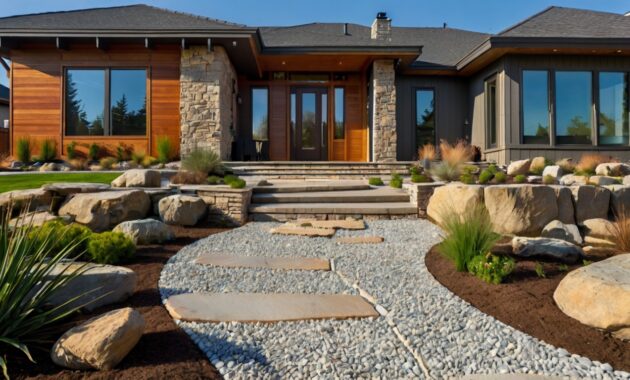
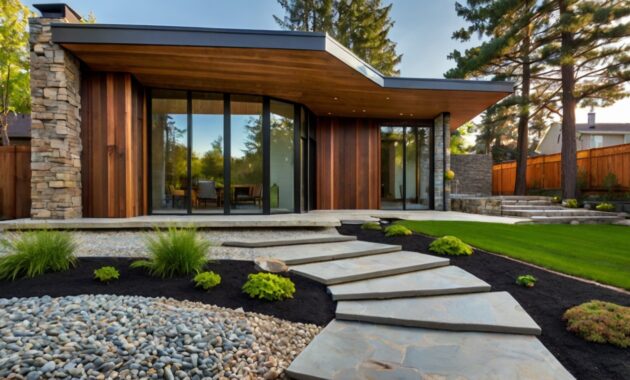
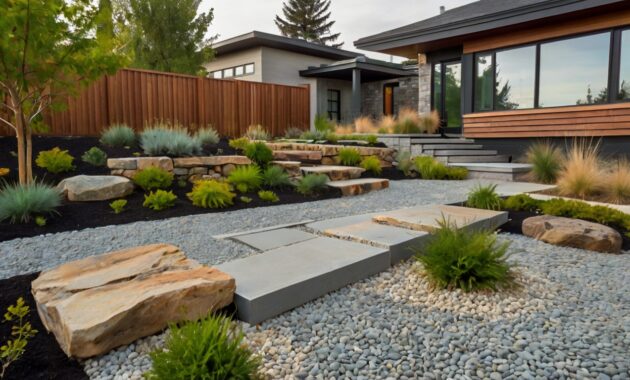

A rock garden in front yard landscaping is a distinctive and visually appealing design that incorporates rocks, stones, and often drought-resistant plants to create a low-maintenance and aesthetically pleasing outdoor space. Here’s a detailed explanation of what rock gardens entail and why they can be an excellent choice for front yards:
a. Elements of a Rock Garden:
- Rocks and Stones:
- Variety: Rock gardens typically feature a variety of rocks and stones of different sizes, shapes, and textures. These can include river rocks, boulders, gravel, and flagstones.
- Arrangement: Rocks are strategically placed to mimic natural rock outcrops or formations, creating an organic and harmonious look.
- Plants:
- Selection: Drought-resistant plants that thrive in rocky, well-drained soils are often chosen. Examples include succulents, alpine plants, ornamental grasses, and herbs like thyme or lavender.
- Layout: Plants are interspersed among the rocks, planted in pockets of soil or gravel. This creates a naturalistic and integrated planting scheme.
- Mulch and Ground Cover:
- Purpose: Mulch or gravel is used to cover bare soil areas between rocks and plants.
- Types: Options include decorative gravel, crushed granite, or bark mulch, which not only enhances the aesthetic but also helps retain moisture and suppress weeds.
- Paths and Edging:
- Paths: Sometimes, rock gardens incorporate pathways made of gravel or stepping stones, guiding visitors through the garden.
- Edging: Edging materials like larger rocks or bricks can define the boundaries of the rock garden, separating it from surrounding lawn or other garden areas.
b. Benefits of Rock Gardens for Front Yard Landscaping:
- Low Maintenance:
- Rock gardens require less watering and maintenance compared to traditional gardens with high-maintenance plants. Once established, they are generally self-sustaining with minimal upkeep.
- Water Efficiency:
- Drought-tolerant plants and well-draining soils reduce the need for irrigation, making rock gardens environmentally friendly and water-efficient.
- Aesthetic Appeal:
- The natural textures and colors of rocks, combined with the unique forms of drought-resistant plants, create a visually striking landscape that can complement various architectural styles.
- Space Utilization:
- Rock gardens can be designed to fit small or irregularly shaped spaces effectively, making them versatile for front yards of different sizes and configurations.
- Erosion Control:
- Rocks help stabilize soil and prevent erosion, particularly on slopes or areas prone to runoff.
- Year-Round Interest:
- Many plants chosen for rock gardens offer seasonal interest with blooms, foliage color changes, or unique textures, ensuring the garden looks attractive throughout the year.
Design Considerations:
- Site Analysis: Assess sunlight exposure, soil drainage, and existing landscape features to determine the best location for a rock garden.
- Scale and Proportion: Balance the size of rocks and plants to create a harmonious and naturalistic composition.
- Maintenance Plan: Plan for occasional weeding, pruning, and rock repositioning as needed to maintain the garden’s appearance.
Read also:
1. 107 Wood Coffee Table Ideas: Modern Style & Timeless Appeal
2. 53 Modern Coffee Table: Elevate Your Living Room Style
3. 40 Natural Wood Coffee Table Ideas: Bring Warmth & Style
4. Accent Features
Integrate rocks as accent features to highlight specific areas of your front yard:
- Water Features: Use rocks around a small pond or fountain to create a natural look.
- Statues or Sculptures: Place boulders strategically to showcase sculptures or garden art.
- Seating Areas: Surround seating areas with rocks to define the space and add a rustic charm.

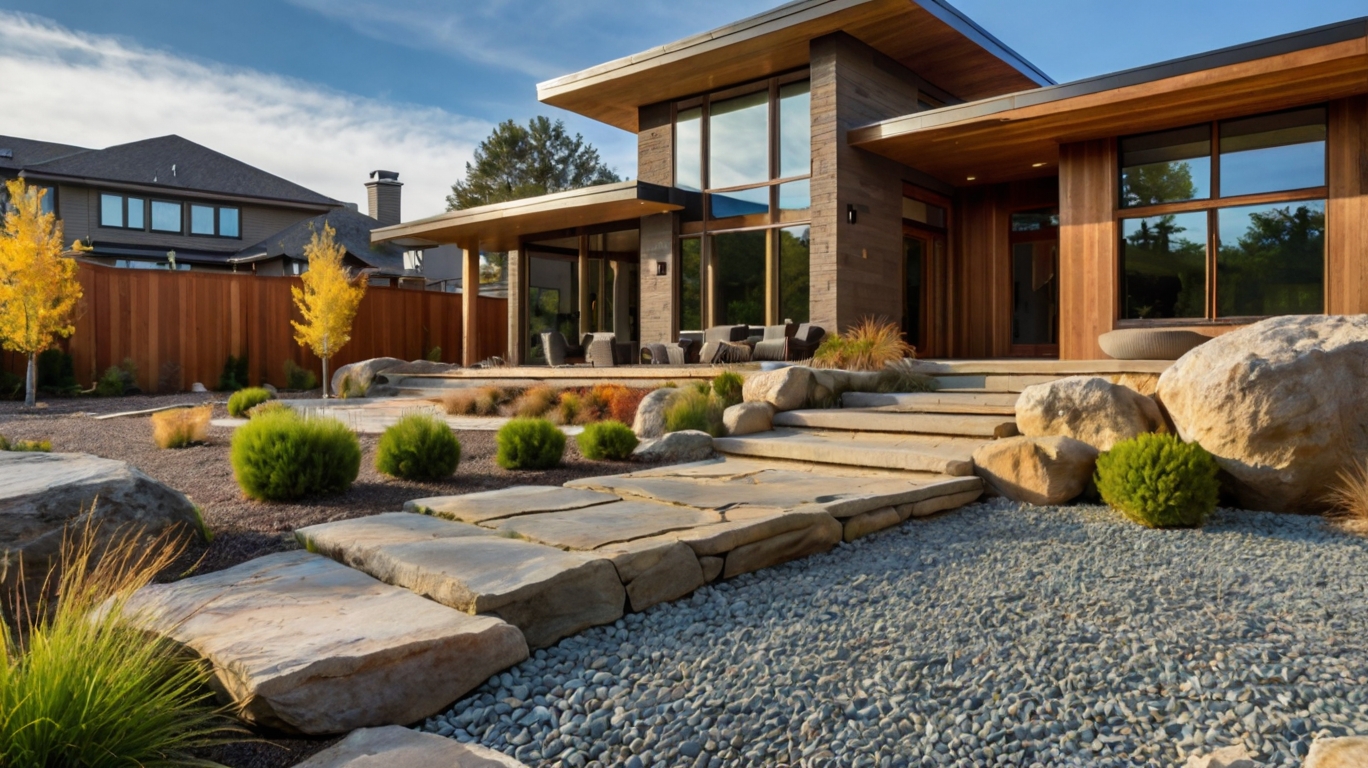
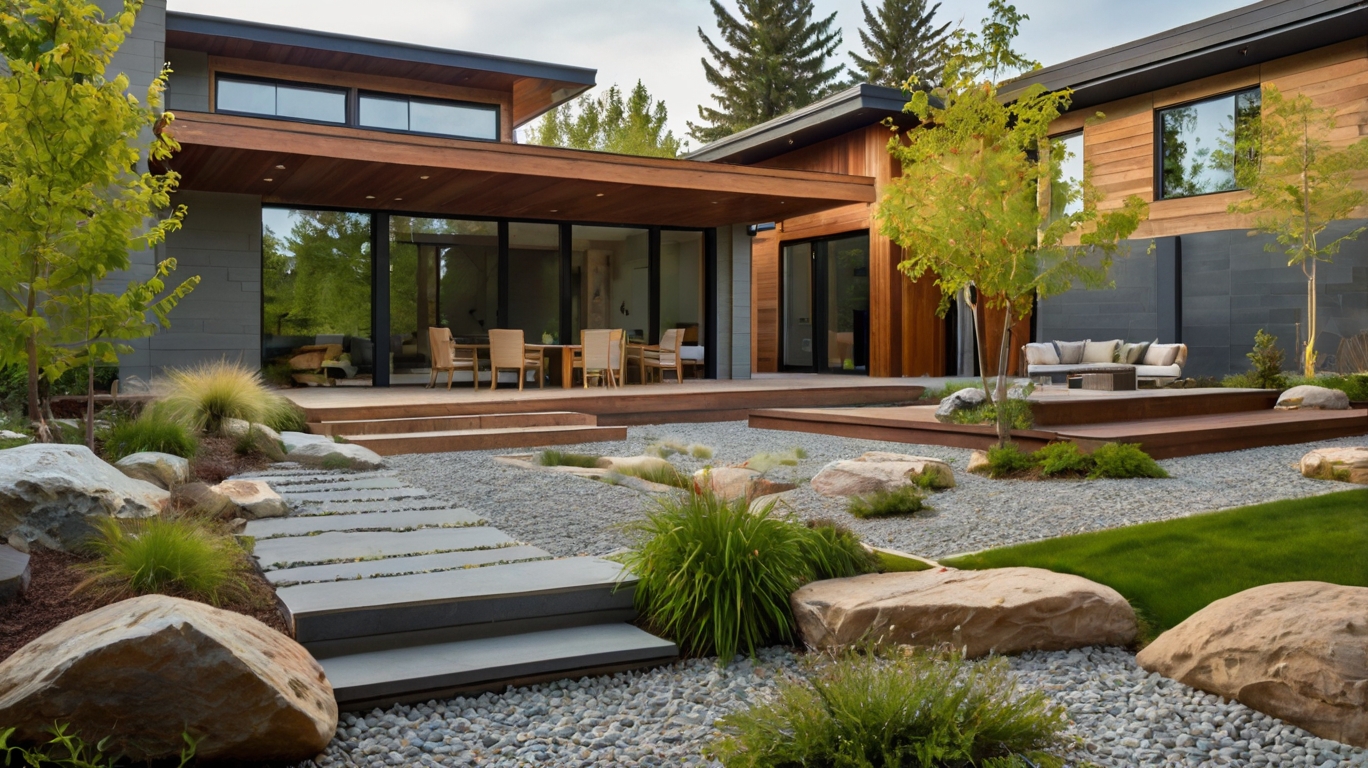
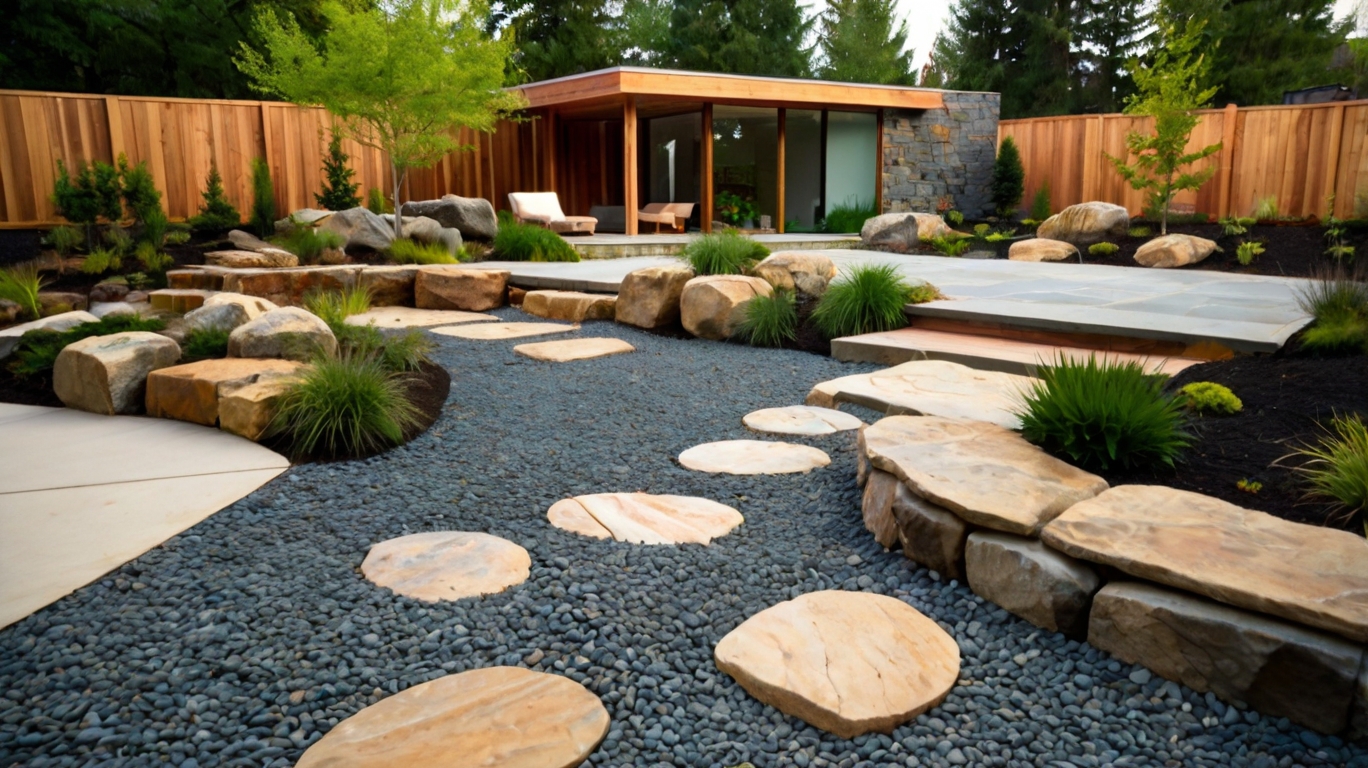
Read more:
1. 53 Low Maintenance Container House Ideas | Inspira Building
2. 55 Fire Pit on Grass Ideas: Extend Your Outdoor Season with Warmth and Ambiance
3. 55 Creative Bookshelf Ideas: Design Inspiration for Your Home
5. Edging and Borders
Define flower beds or lawn areas with rock borders. This helps to prevent soil erosion, keeps mulch in place, and adds structure to your landscaping design. Experiment with different rock sizes and shapes to achieve the desired look.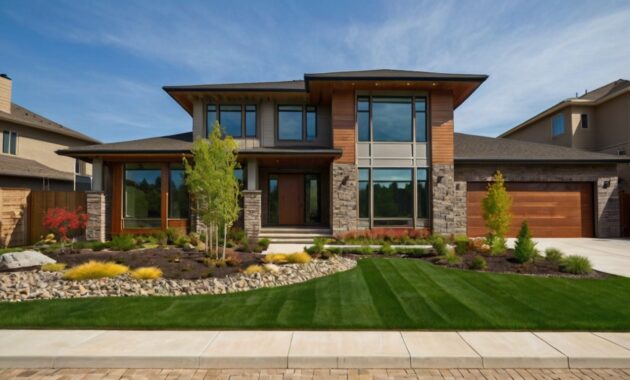
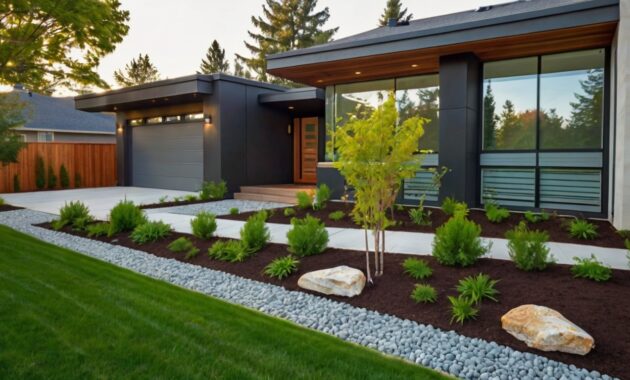
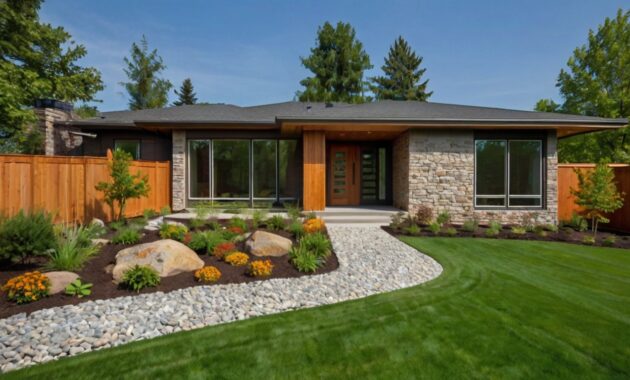

6. Xeriscaping
Embrace xeriscaping principles by incorporating rocks alongside drought-resistant plants. This eco-friendly approach reduces water consumption while maintaining an attractive front yard year-round.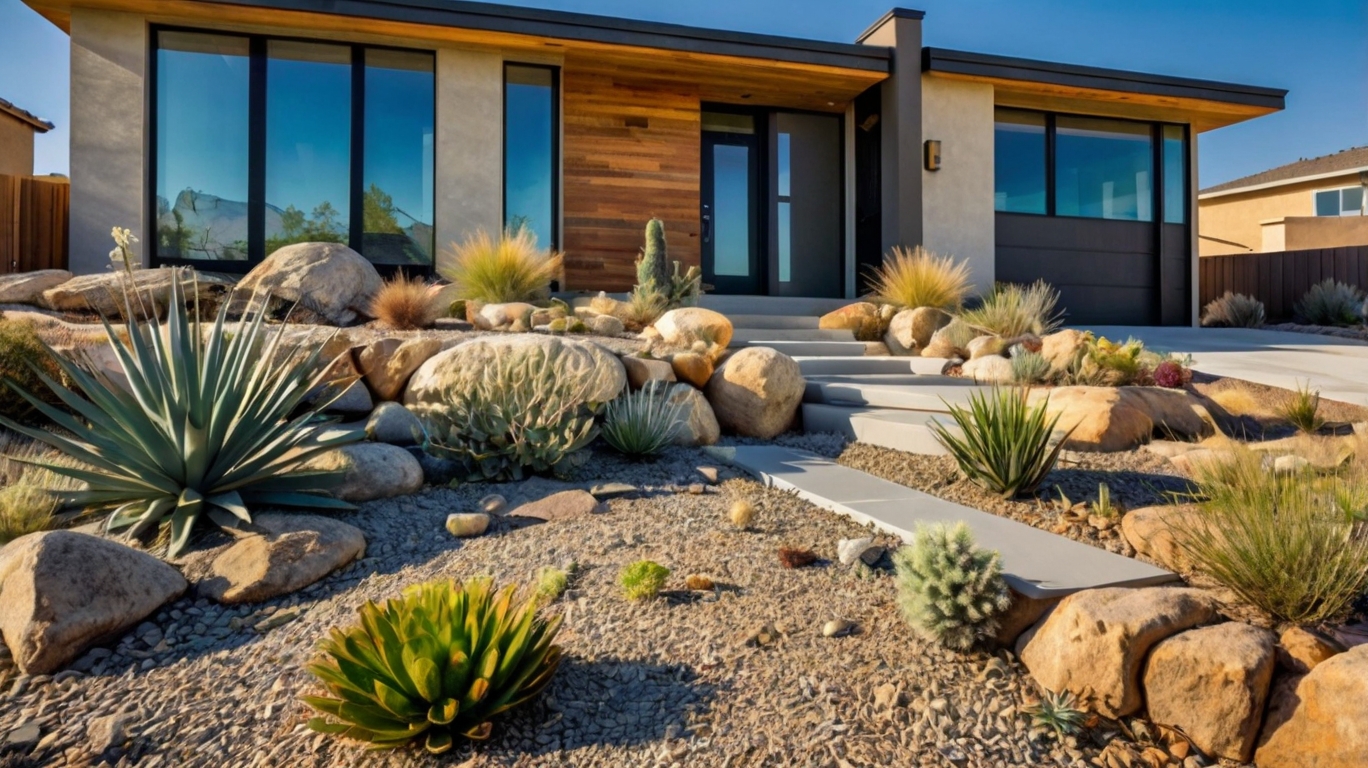
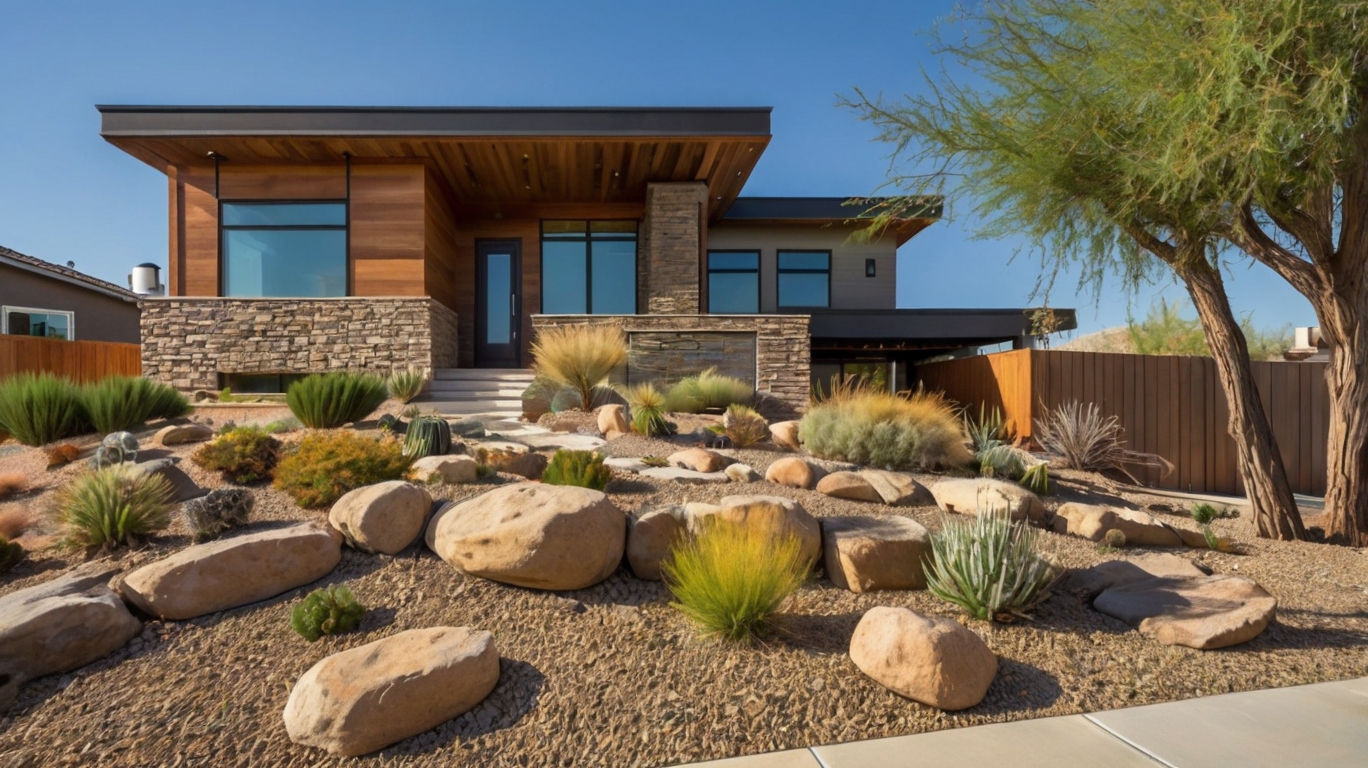
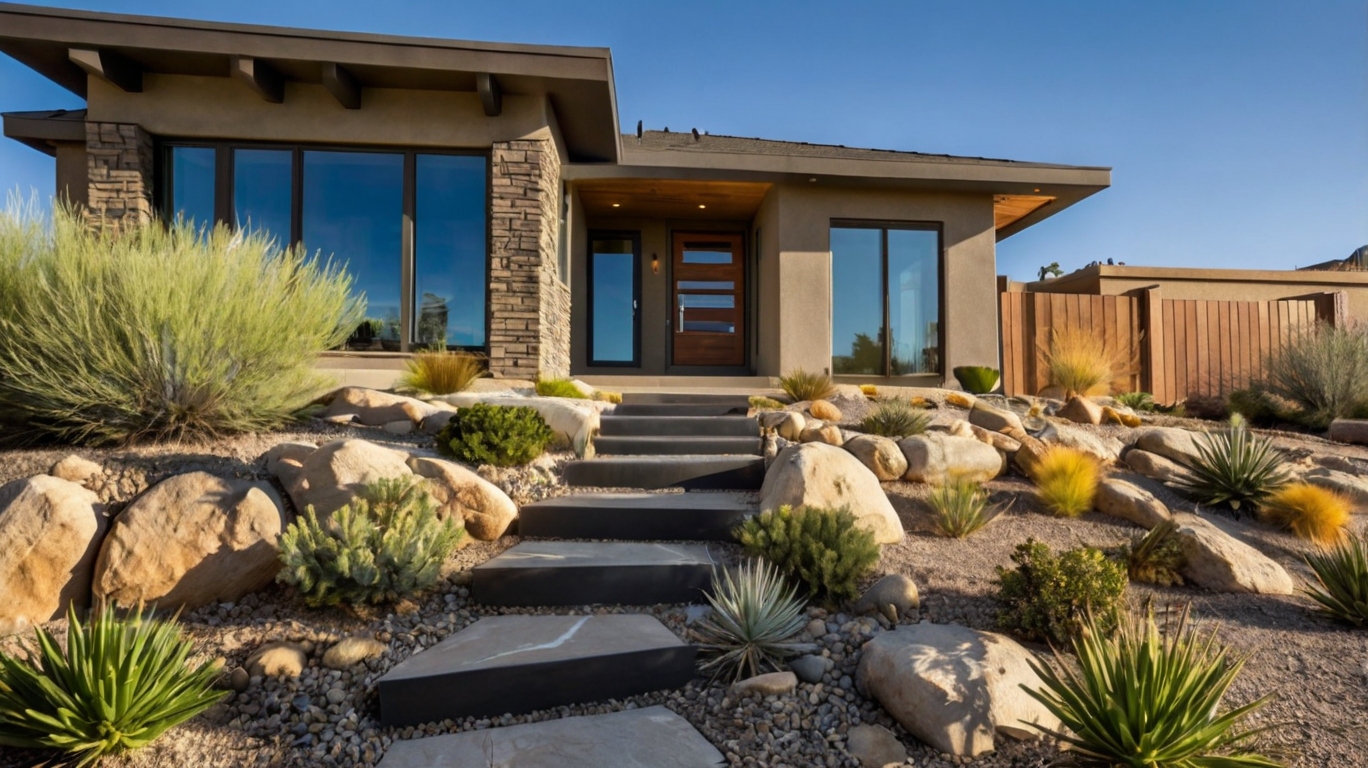
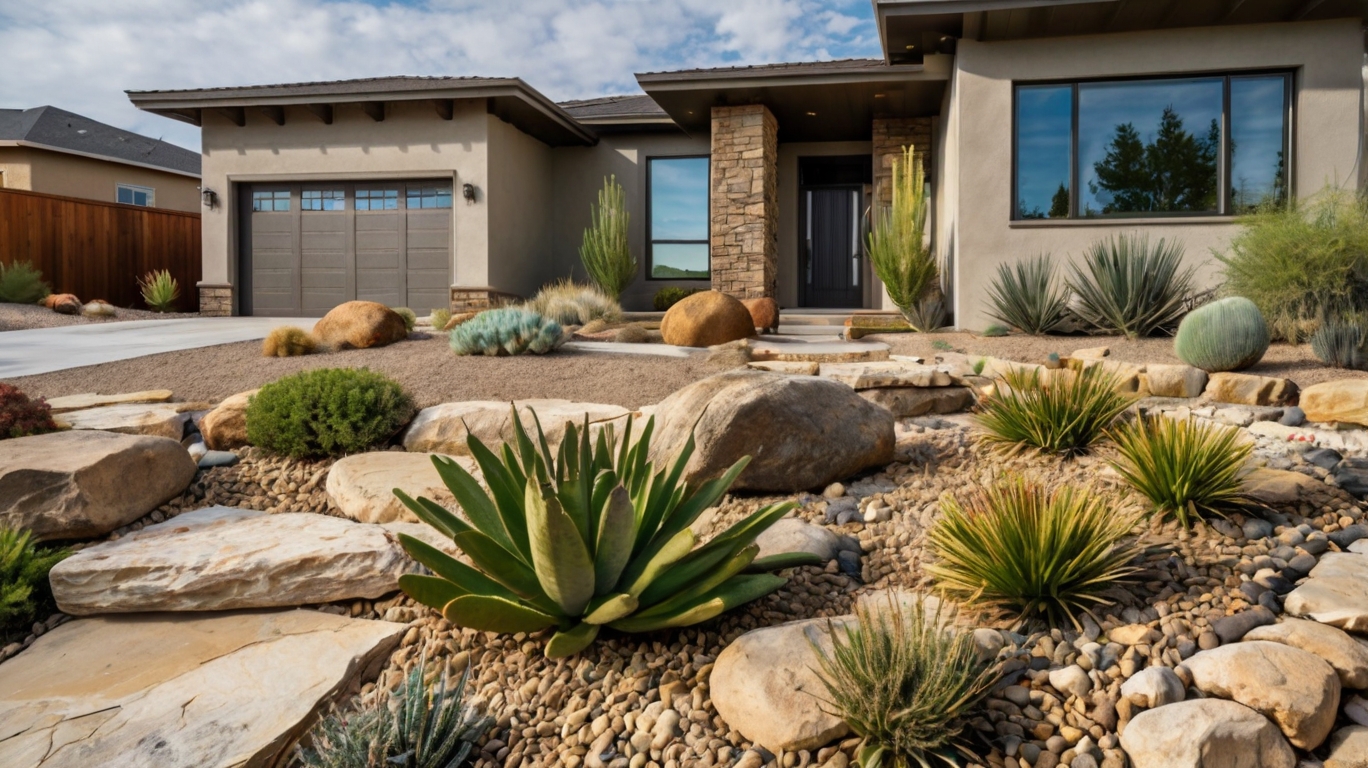
7. Color and Texture Contrast
Use rocks to create contrast against greenery and flowers. Dark rocks like lava rock or black pebbles can make bright plants stand out, while lighter rocks such as limestone can create a softer, more subtle effect.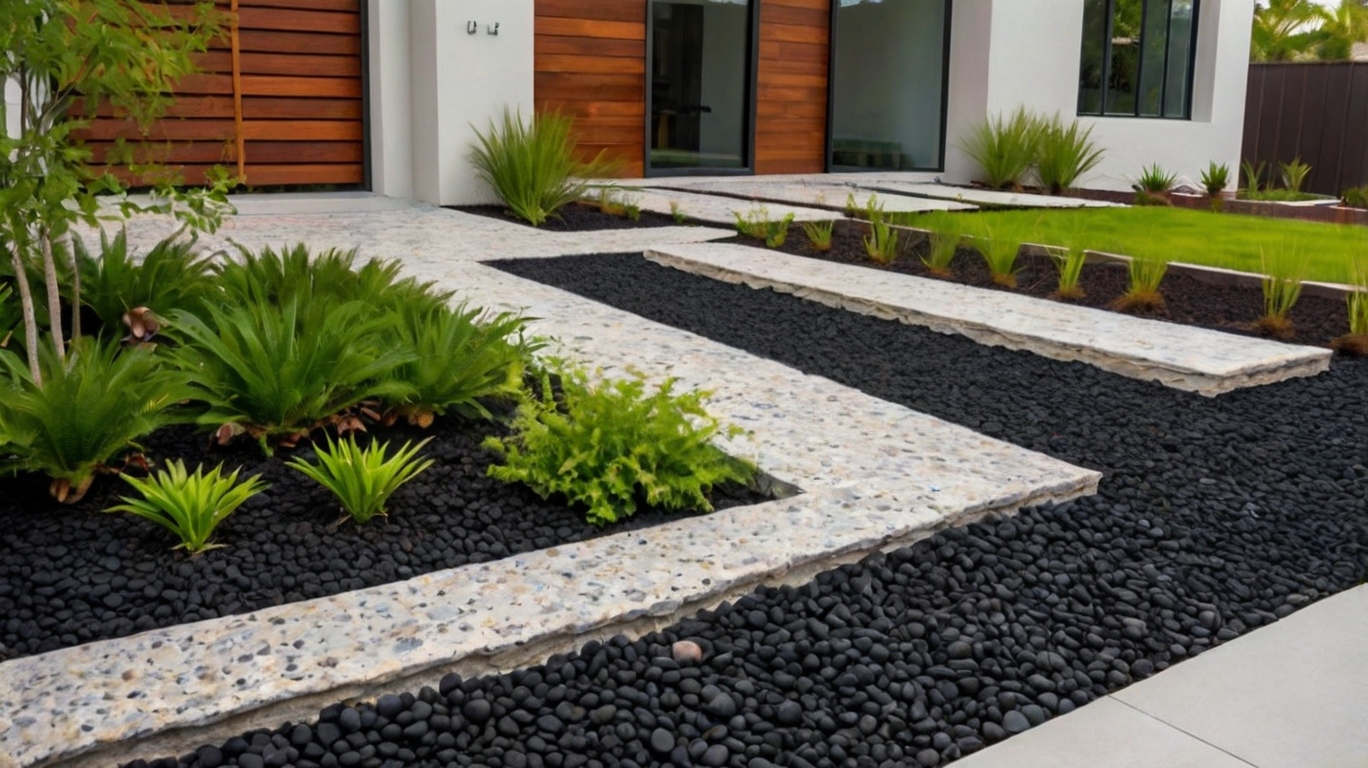
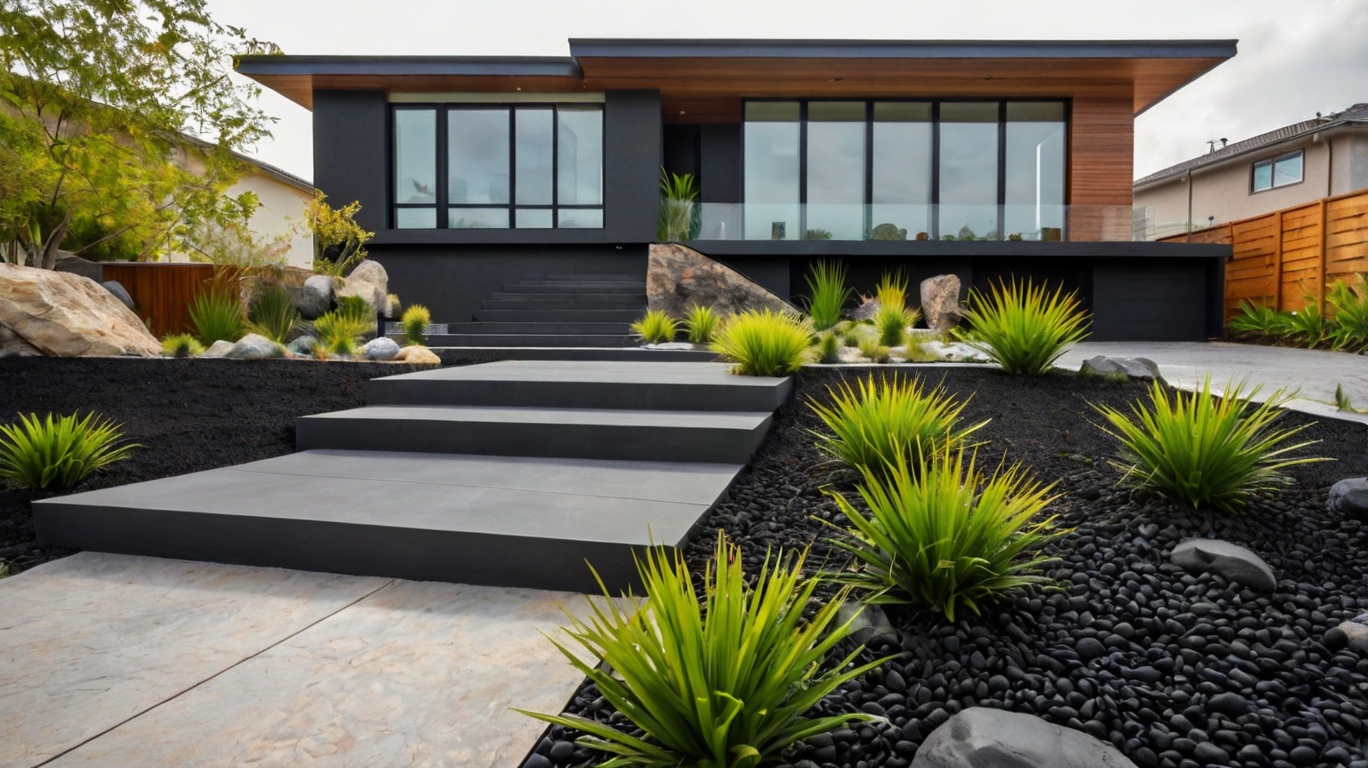

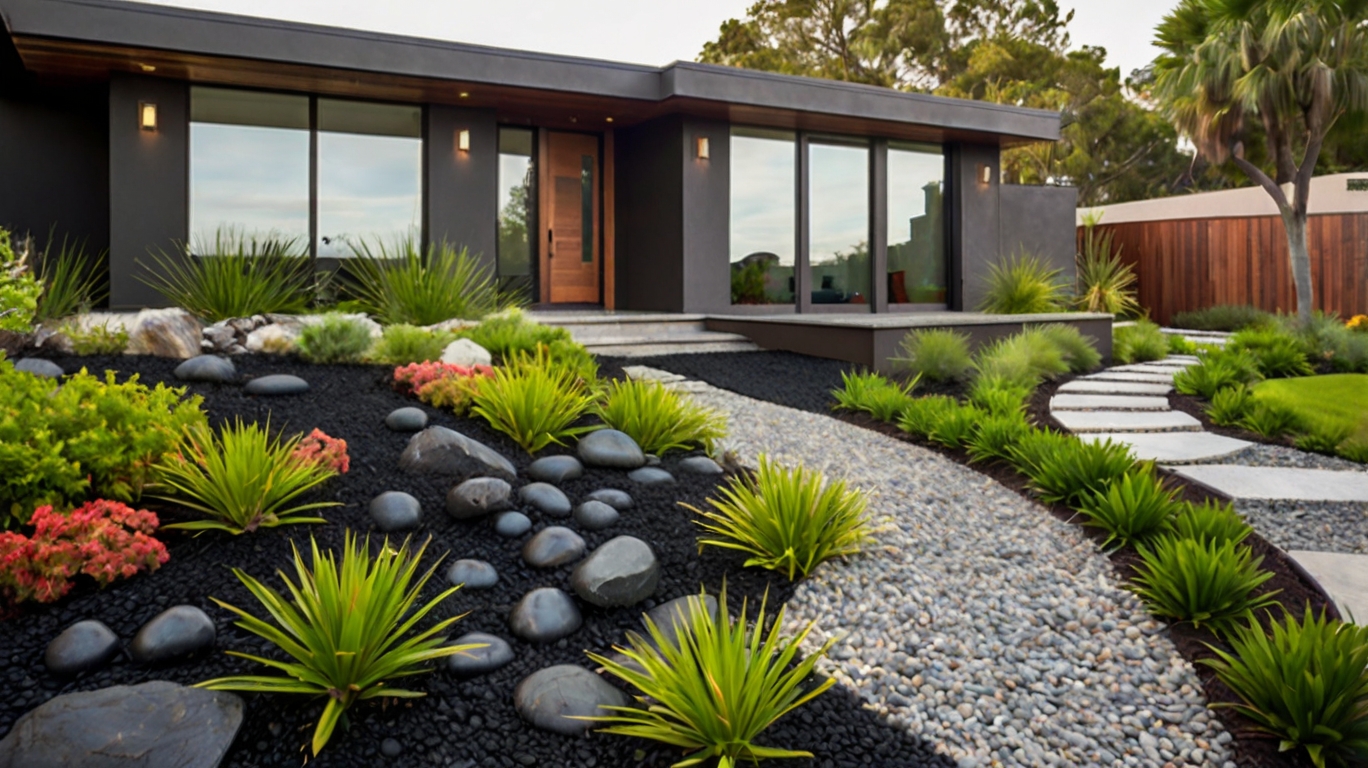
8. Maintenance Considerations
One of the primary benefits of using rocks in landscaping is their low maintenance nature. They require occasional cleaning to remove debris but generally do not need watering, pruning, or mowing like traditional gardens.
Maintaining front yard landscaping with rocks involves several key practices to ensure your outdoor space remains attractive and functional over time. Here are some essential tips:
a. Regular Cleaning and Debris Removal:
- Task: Remove leaves, dirt, and other debris that accumulate on the rocks regularly.
- Why: Prevents buildup that can degrade the appearance and promotes weed growth.
b. Weed Control:
- Task: Inspect the areas between rocks for weeds and remove them promptly.
- Methods: Hand-pulling weeds or using a weed killer that won’t harm surrounding plants.
c. Inspect and Maintain Edging:
- Task: Check rock edging around beds or pathways for shifts or damage.
- Methods: Realign rocks as necessary, replace any that are broken, and ensure edges remain tidy.
d. Monitor Drainage and Water Flow:
- Task: Check that rocks around drainage areas or pathways aren’t obstructed.
- Why: Ensures proper drainage and prevents erosion or water pooling.
e. Address Moss and Algae Growth:
- Task: Address any moss or algae growth on rocks.
- Methods: Use a brush to scrub affected areas, or apply a moss/algae remover as needed.
f. Replenish or Rearrange Rocks:
- Task: Periodically replenish gravel or pebbles that may have shifted or spread out.
- Methods: Use a rake or by hand to redistribute and level rocks as needed.
g. Inspect Irrigation Systems:
- Task: Ensure irrigation systems (if any) are not causing water to pool around rocks excessively.
- Why: Prevents water damage and maintains the integrity of the rock layout.
h. Protect Against Weeds Under Rocks:
- Task: Lay landscape fabric under rocks to inhibit weed growth.
- Why: Provides long-term weed control and reduces maintenance efforts.
i. Inspect and Maintain Lighting:
- Task: Check outdoor lighting fixtures around rocks for damage or malfunction.
- Methods: Replace bulbs, clean fixtures, and adjust lighting angles as needed.
j. Seasonal Assessments and Touch-ups:
- Task: Perform seasonal assessments to address any winter damage or spring growth.
- Methods: Replenish mulch, trim plants, and adjust rock placement for a fresh appearance.
General Tips:
- Use Tools: Keep a set of gardening tools handy for regular maintenance tasks.
- Schedule: Establish a regular schedule for maintenance to keep your front yard looking its best.
- Professional Help: Consider hiring professionals for more significant tasks like repositioning large rocks or repairing irrigation systems.
9. Lighting Effects
Enhance the nighttime appeal of your front yard by strategically placing outdoor lighting around rocks. This not only highlights their textures but also improves safety and security around your home.
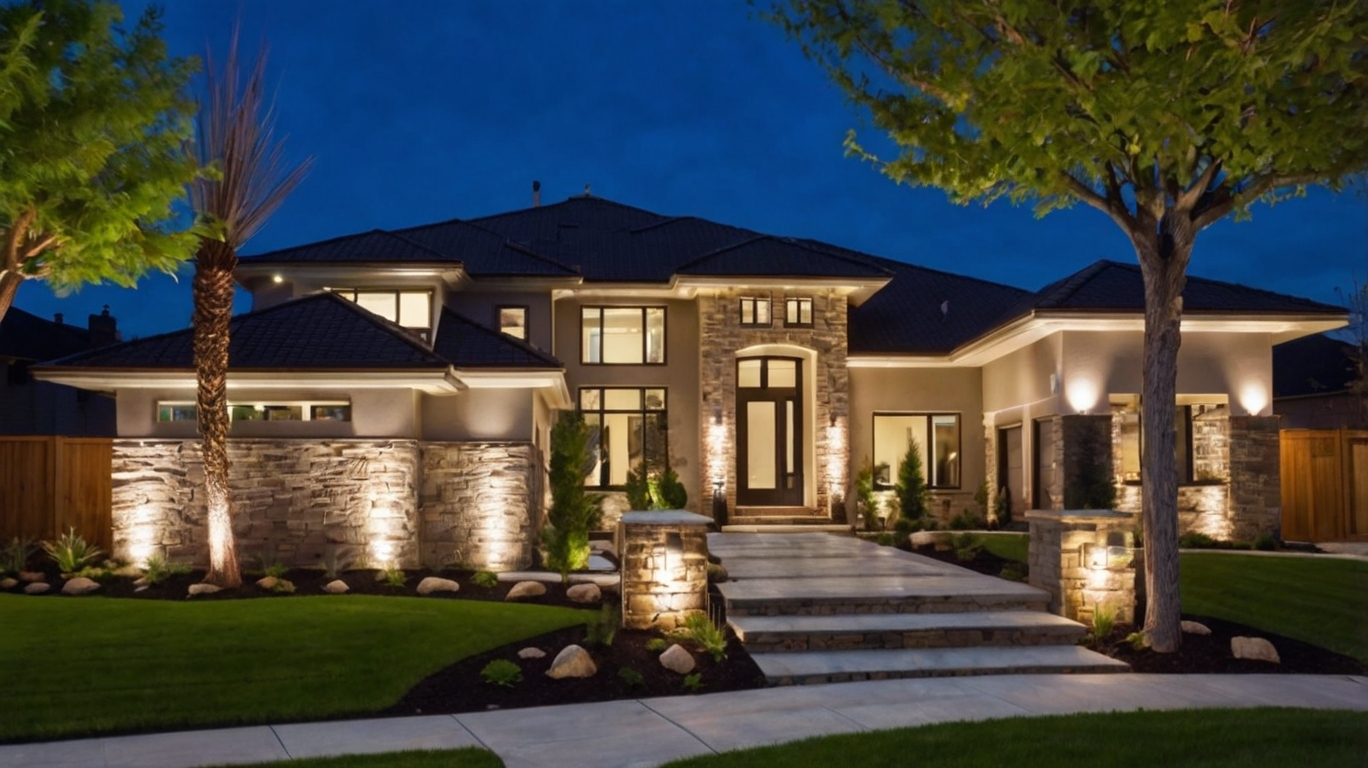
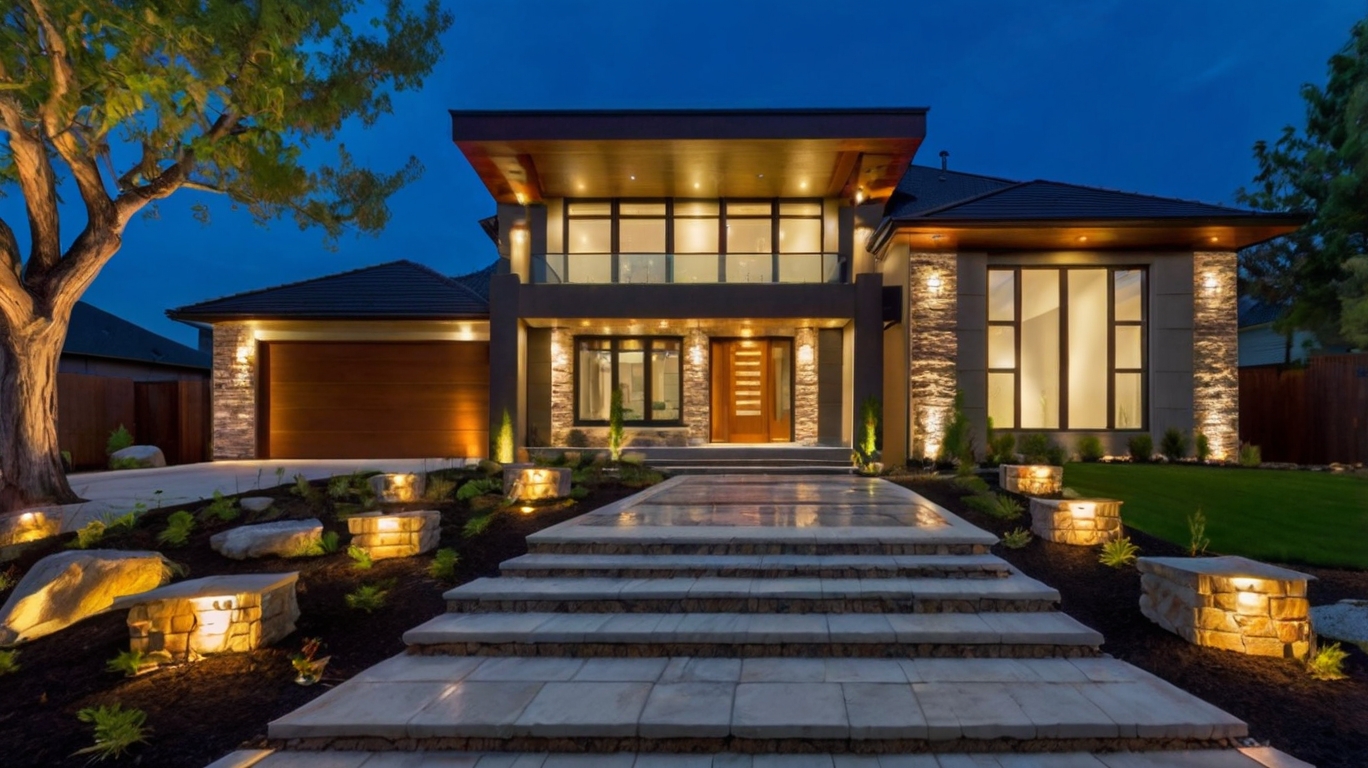
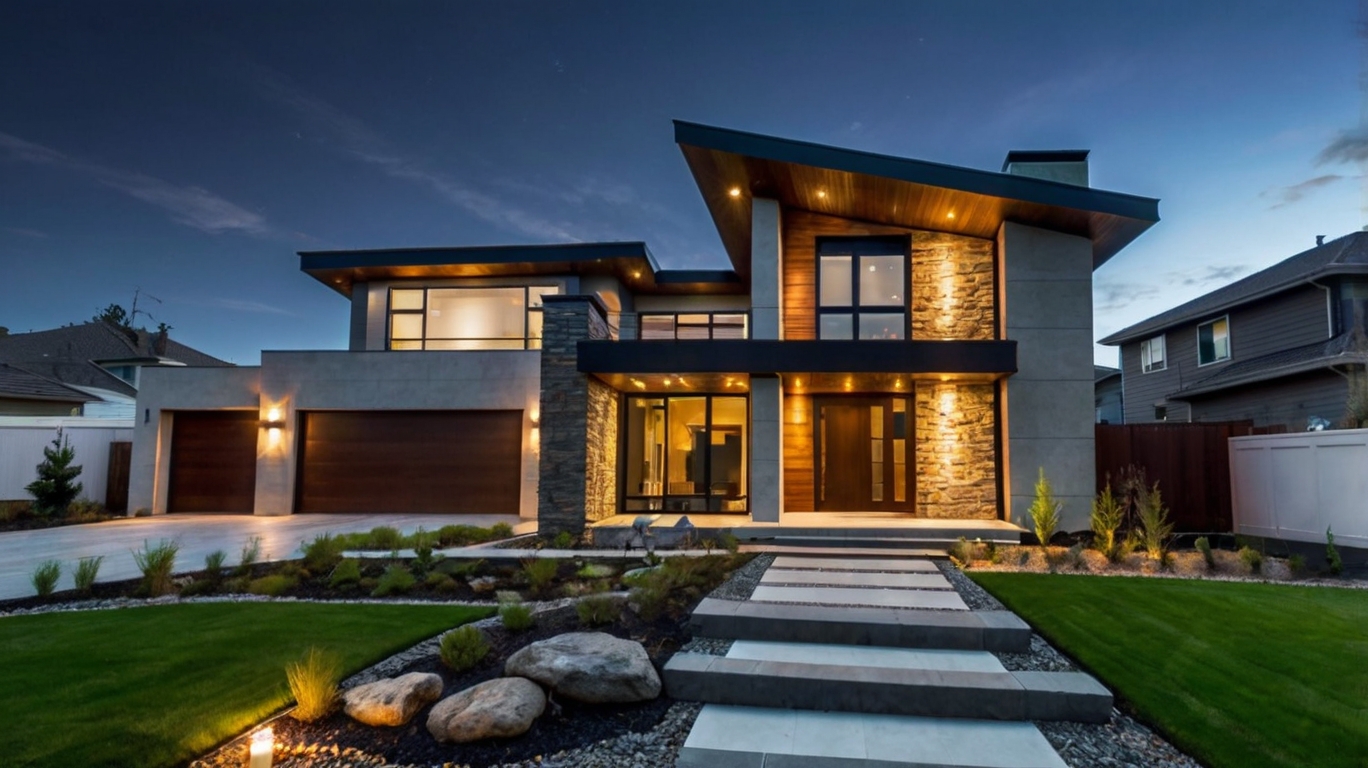
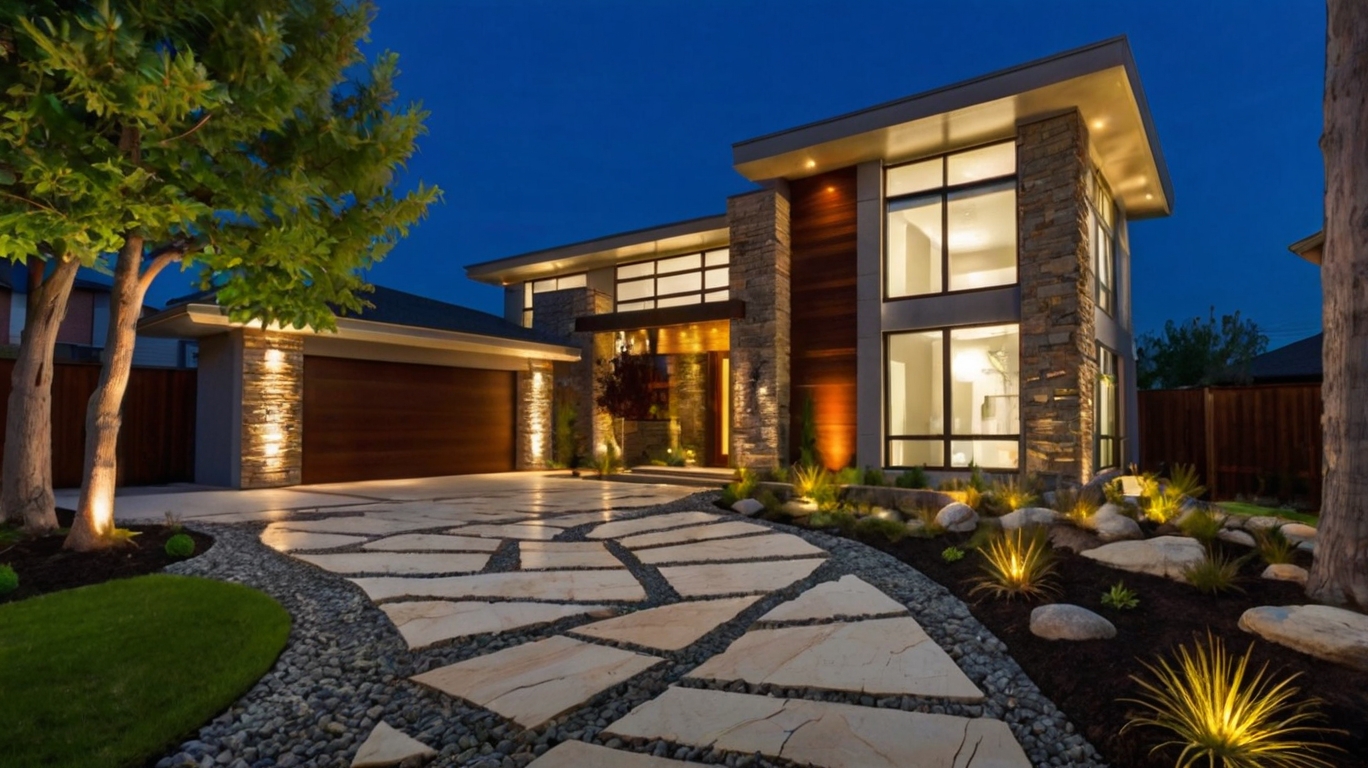
10. Environmental Benefits
Using rocks in landscaping promotes sustainability by reducing the need for water and pesticides. They also help to stabilize soil and prevent erosion, contributing to the overall health of your garden ecosystem.
Dry rock streams can add an interesting feature to your yard and also help with drainage. They also don’t require any maintenance, as long as you regularly weed them.
You can even make your own rock stream by digging a trench and placing rocks in it.
read also:
- How to make rock garden you’ll love – Beautiful garden ideas
- Various Ornaments to make your terrace attractive
- Landscaping front yard for a beautiful garden
You can create paths from the curb to the front door and add a civilized touch to your home without compromising on the look of your landscape.
Bricks and pavers can be used to create a path from the front door to the yard.
For a low-maintenance front yard, use rocks. Use smaller stones for edging and large flat rocks for a beautiful layered look.
A small zigzag pattern can be used to form a pathway, and large flat rocks can create a walkway leading to your front door.
Adding pots to your walkway can also help make it graceful. This landscaping idea is also great for corridor entrances.
When designing your front yard, choose a rock-stairway to welcome guests. It will stand out and not require any landscaping.
If you do plan to plant plants near the entrance, add a few potted flowers to enhance the overall look. Using a rock stairway is an excellent way to make a statement and attract attention.
In addition to bringing nature to your front yard, a rocky stairway is a great way to add more interest.
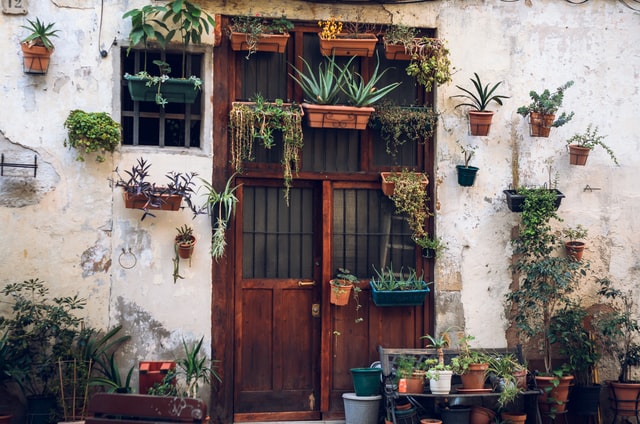
If you’re interested in DIY projects, use vintage planter or a tiered plant stand can be made out of old wagon parts and wooden beams.
You can use an old wheelbarrow to create a planter, or repurpose it for a decorative focal point. You can also use rusty kitchen utensils as planters.
Some exotic plants are hardy in a desert climate and will survive in that environment.
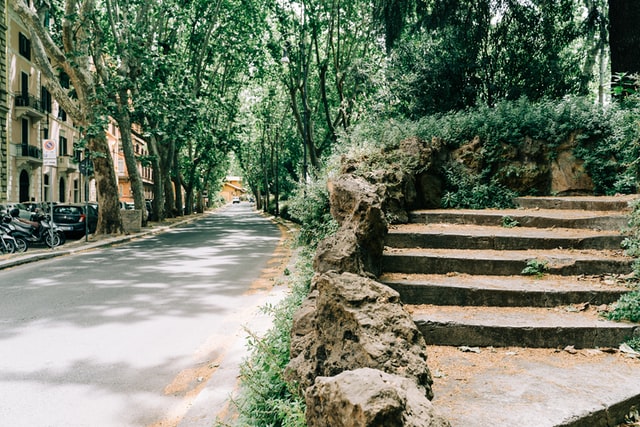
You can also install a rock stair. This will be a great feature for your front yard and draw attention to your home. There are many benefits to using a rock stair.
For example, a large mountain rock can catch the eye of passersby, whereas plants will make your stairway stand out.
A retaining wall can help to hold back water from the ground and improve your curb appeal. It is not necessary to use a rock stair, but it can be an attractive accent.
A rock stair will draw people’s attention, and a rock wall is a popular front yard landscaping idea. While a rock stair does not require any other landscaping, the presence of a rock staircase will draw attention to your front yard.
A big mountain rock will be a beautiful focal point in the front yard. Adding plants can also enhance this focal point. And you can use a variety of rocks to make your front yard look unique.

You can also use rocks as a feature in your front yard. You can arrange pea gravel between large boulders to give the appearance of a river.
You can also use a band of river rocks to highlight your front yard’s natural beauty. Besides the rustic look, rock layers are an affordable, low-maintenance way to add a touch of natural beauty.
Incorporating rocks into your landscaping will add style and flair to your property and make it stand out.
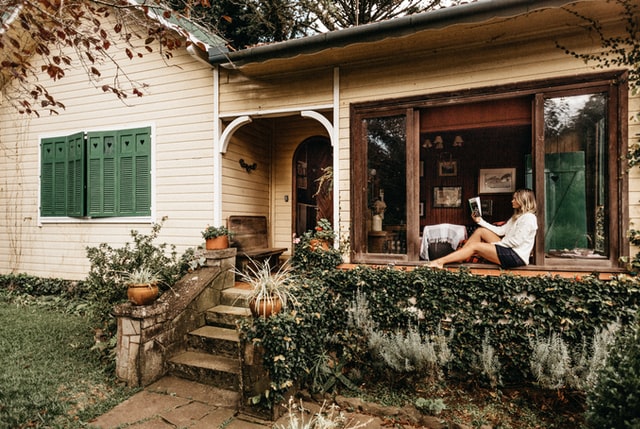
If you don’t have much room for a grassy area, you can still add rocks to your front yard. The addition of rocks to your front yard will add some curb appeal and will be low-maintenance.
You can also use large rocks to create a retaining wall.
It is a great way to keep dirt from eroding and will prevent soil from shifting. A retaining wall is another great rock landscaping idea.
